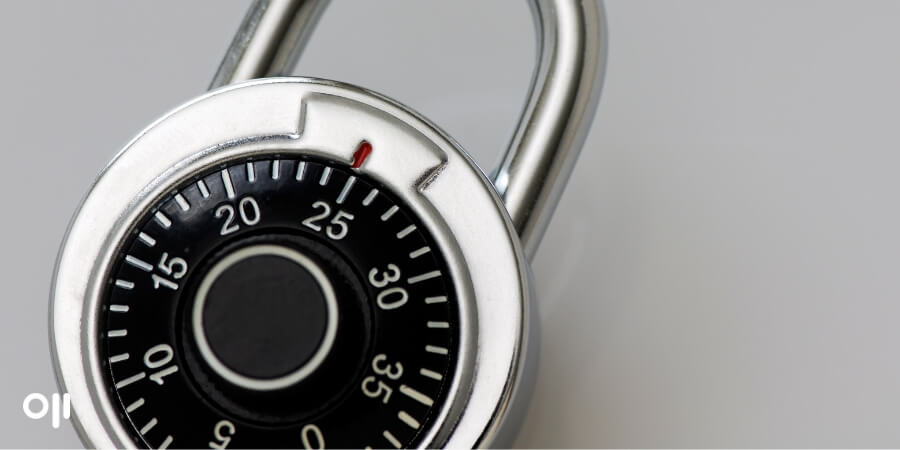
Best Combination Lock of 2023
A combination lock is a type of locking mechanism that utilizes a specific sequence of numbers or symbols to unlock it. Unlike a key lock, which requires a physical key to open it, a combination lock relies on the memorization and input of a unique combination to release its locking mechanism. Combination locks are commonly used to secure items such as safes, lockers, and luggage.
History of Combination Lock
The earliest known example of a combination lock dates back to the Roman Empire, where it was used to secure small storage boxes. However, it wasn’t until the 19th century that combination locks became widely used. In 1857, a man named James Sargent invented the first practical combination lock, which he called the “Sargent and Greenleaf.” The lock was designed to be tamper-proof and could only be opened with the correct combination of numbers.
How Combination Locks Work
Combination locks typically consist of a dial, a spindle, and a locking mechanism. The dial is used to input the combination, and the spindle rotates as the numbers or symbols are entered. Once the correct sequence is entered, the locking mechanism disengages, allowing the lock to be opened.
Combination locks can be configured in a variety of ways, depending on the number of digits or symbols used and the sequence required to unlock them. Some locks require a specific order of numbers, while others allow any order as long as the correct digits are entered.
Types of Combination Lock
There are several types of combination locks, each with its own unique features and applications. The most common types of combination locks include:
- Dial Combination Locks – These locks feature a rotating dial with numbers or symbols on it. The lock is opened by rotating the dial to the correct sequence of numbers or symbols.
- Push-Button Combination Locks – These locks have a series of buttons that must be pressed in the correct order to unlock them.
- Electronic Combination Locks – These locks use electronic circuitry to verify the correct sequence of numbers or symbols. They may also have additional features such as alarms, time-delay settings, and audit trails to track access attempts.
Advantages of Combination Lock
Combination locks offer several advantages over traditional key locks. Some of the most significant benefits of using combination locks include:
- Convenience – Combination locks eliminate the need for keys, which can be lost or misplaced.
- Security – Combination locks can be designed to be tamper-proof and provide a high level of security.
- Customization – Combination locks can be configured in a variety of ways, allowing users to choose the specific sequence of numbers or symbols that they prefer.
- Durability – Combination locks are typically made from sturdy materials such as steel or brass, making them resistant to damage from physical attacks.
Disadvantages of Combination Lock
Despite their many advantages, combination locks also have some drawbacks. Some of the most significant disadvantages of using combination locks include:
- Complexity – Combination locks can be difficult to use for people who are not familiar with them, particularly those with poor eyesight or dexterity issues.
- Vulnerability to Attack – Although combination locks are designed to be tamper-proof, they can be vulnerable to attacks such as brute-force cracking, in which an attacker systematically tries every possible combination until the correct one is found.
- Limited Combination Options – Combination locks typically have a limited number of possible combinations, making them more susceptible to brute-force attacks.
How do you unlock a combination lock?
To unlock a combination lock, follow these steps:
- Turn the dial on the lock to the right (clockwise) a few times to reset the lock.
- Set the dial to the first number of the combination. Pull the shackle or the latch on the lock to open it.
- Turn the dial to the second number of the combination. Pull the shackle or the latch again to open the lock.
- Turn the dial to the third and final number of the combination.
- Pull the shackle or the latch one more time to fully unlock the lock.
If you are having trouble unlocking the lock, double-check that you have the correct combination and that you are turning the dial in the correct direction. Some combination locks may have additional steps or requirements, so refer to the lock’s instructions for more specific guidance.
How do I set a Combination Lock?
The specific instructions for setting a combination lock will depend on the brand and model of the lock. However, the general steps for setting a combination lock are as follows:
- Make sure the lock is open.
- Find the reset button on the lock. This is usually located on the back or bottom of the lock.
- Use a pen or small tool to press and hold the reset button. The lock may require some pressure to activate the reset function, so hold the button down firmly.
- While holding the reset button down, turn the dials to the desired combination. Be sure to write down the combination so you don’t forget it.
- Release the reset button. The lock should now be set to the new combination.
It’s important to note that some combination locks have specific instructions that may differ slightly from the steps above. Be sure to consult the instructions that came with your lock for specific guidance.
Features of Combination Lock
A combination lock is a type of lock that is opened using a specific sequence of numbers or symbols. Here are some of the features of a combination lock:
- Dials: Combination locks typically have one or more dials that can be turned to set the lock’s combination. The dials may be labeled with numbers, letters, or symbols.
- Combination: The combination is the sequence of numbers or symbols that must be entered in order to unlock the lock. Depending on the type of lock, the combination may consist of multiple numbers or symbols.
- Tumblers: Combination locks contain internal tumblers or pins that must be aligned in a specific pattern in order for the lock to be opened. The combination turns the tumblers to the correct position.
- Security: Combination locks are generally considered to be more secure than locks that use keys, as they require the correct combination to be entered in order to be opened.
- Re-setting: Combination locks can often be re-set to a new combination, allowing users to change the combination periodically for added security.
- Durability: Combination locks are typically made from durable materials, such as metal or heavy-duty plastic, that can withstand regular use and resist tampering.
- Portability: Combination locks are available in a variety of sizes and styles, making them easy to use and transport for a variety of applications, including luggage, lockers, and doors.
Things to Know about Combination Lock
A combination lock is a type of lock that opens when the correct combination of numbers or symbols is entered into the lock. Here are some things to know about combination locks:
- How it works: Combination locks typically have a dial or keypad with numbers or symbols on it. The lock is opened by turning the dial or pressing the correct combination of symbols in the right order.
- Types of combination locks: Combination locks come in many different types and styles, including padlocks, luggage locks, safe locks, and bike locks.
- Security: Combination locks can provide a high level of security, as they don’t require a physical key that can be lost or stolen. However, they can also be vulnerable to certain types of attacks, such as guessing or cracking the combination.
- Resetting the combination: Most combination locks can be reset to a new combination if the owner forgets the old one or wants to change it. This usually requires following a specific procedure or using a special tool.
- Combination lock history: Combination locks have been used for centuries, with some of the earliest examples dating back to ancient Rome. They have been used to secure everything from safes to bank vaults.
- Combination lock popularity: Combination locks remain popular today because they are simple, reliable, and effective at providing security in a wide range of applications.
How to choose the best Combination lock for you
When choosing a combination lock, there are several factors to consider to ensure you get the best one for your needs. Here are some things to keep in mind:
- Security: The primary function of a combination lock is to keep your belongings safe. Look for a lock with a strong and durable construction, with a thick shackle and a secure locking mechanism.
- Size: The size of the lock will depend on what you want to secure. For example, if you want to secure a gym locker, a smaller lock will be appropriate, while a larger lock may be needed to secure a bike.
- Combination mechanism: Combination locks can have different mechanisms, such as a rotary dial or push-button. Consider what type of mechanism you prefer and feel comfortable using.
- Ease of use: Make sure the lock is easy to use and reset the combination. You don’t want to struggle with your lock every time you need to open it.
- Durability: A combination lock is an investment, so choose one that is built to last. Look for locks made of durable materials that can withstand wear and tear.
- Price: Combination locks come in a wide range of prices, from very cheap to very expensive. Consider your budget and find a lock that fits your needs and your wallet.
- Brand: Look for well-known brands with a good reputation for quality and security.
By considering these factors, you should be able to find the best combination lock for your needs.
Conclusion
Combination locks are an effective and convenient way to secure valuables, from small storage boxes to large safes. They offer a high level of security and customization, allowing users to choose the specific sequence of numbers or symbols that they prefer. However, they can also be vulnerable to attack and may be difficult for some people to use.

